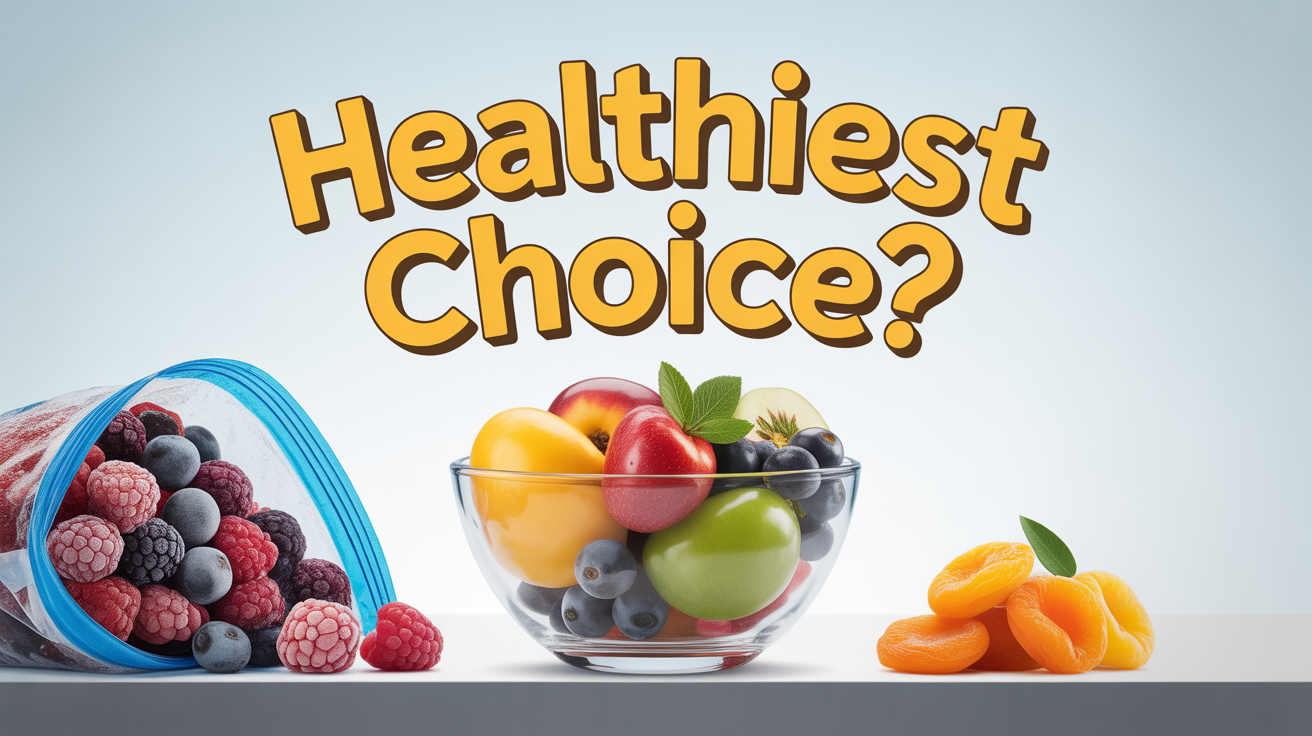We all know that fruits are a very important part of our lives. Since childhood, we are taught to eat fruits daily to maintain good health. Whether it is about vitamins, fiber or giving energy to the body, the contribution of fruits is different from all others.
Nowadays people have started paying more attention to health than ever before. In such a situation, the question often arises that which fruits should we eat – fresh (Fresh Fruits), dried (Dried Fruits) or frozen (Frozen Fruits)? Each has its own advantages and disadvantages. Let us discuss this in detail.
Why Are Fruits Important?
- Fruits are rich in vitamins, minerals, antioxidants and dietary fiber.
- They strengthen our immunity.
- Keep the digestive system healthy.
- Improve the health of both heart and brain.
- And most importantly – they are delicious, which makes eating them a pleasure.
Examples
- Oranges are an excellent source of vitamin C.
- Bananas are rich in potassium, which helps control blood pressure.
- Berries like blueberries and strawberries are rich in antioxidants, which protect the body from damage caused by free radicals.
But the question is, which form of fruit is more beneficial?
Fresh Fruits
Fresh fruits have always been our first choice. They are directly plucked and can be eaten without any processing.
Nutritional Value
Fresh fruits usually contain the most nutrients, as they are eaten without much processing. They contain a good amount of natural vitamins, minerals and antioxidants.
Benefits
- Natural taste – Fresh fruits taste the most authentic and refreshing.
- High nutritional value – If they are eaten immediately after plucking, they contain maximum nutrients.
- Variety – You can eat them directly, add them to salads, make smoothies, or use them in desserts.
Challenges
- Quick perishability – Fresh fruits do not last long. For example, bananas or mangoes start turning black within two to three days.
- Disadvantages of long distance transportation – If fruits are brought from far away and stored for many days, their nutritional value may decrease.
- Can be expensive – The price of some fruits becomes very high according to the season and availability.
Examples
- Watermelon and mango in summer.
- Oranges and guavas in winter.
Dried Fruits
Dried fruits are those from which the water content is removed. For example – raisins, dried dates, dried apricots, etc.
Nutritional Value
After the water is removed, the fruit becomes smaller but the nutrients become concentrated. This means that you get more calories, fibre and minerals in a smaller quantity.
Example: A handful of raisins can have the same amount of sugar and fibre as a bowl of grapes.
Benefits
- Long shelf life – They can be easily stored for months.
- Easily portable – Perfect for travelling or as a snack for the office.
- Rich in fibre – Great for digestion.
Challenges
- High calories – Since they do not contain water, they are full of calories and sugar. Overeating can lead to obesity.
- Vitamin C deficiency – Some nutrients such as vitamin C are lost in the drying process.
- Preservatives – Dried fruits available in the market often contain added sugar or sulphites, which can cause allergies or harm.
Examples
- Raisins – Helpful in increasing blood and digestion.
- Dates – Provide instant energy.
- Prunes – Relieve constipation.
Frozen Fruits
Frozen fruits are those fruits which are plucked and immediately frozen at cold temperatures.
Nutritional Value
- Freezing preserves nutrients to a great extent.
- Sometimes they are even better than fruits which have been kept in the fridge for several days.
- Vulnerable nutrients like vitamin C and folate also remain safe for a long time.
Benefits
- Long shelf life – They can be stored for many months.
- Year-round availability – You can eat strawberries or mangoes all the time, no matter what the season.
- No preservatives – Freezing preserves fruits for a long time without any chemicals.
Challenges
- Change in texture – Fruits may become a little soft and wet after defrosting.
- Storage requirements – They require a deep freezer to store.
- Taste differences – Some people do not like the taste of frozen fruits as much as fresh fruits.
Examples
- Frozen blueberries or strawberries for smoothies and desserts.
- Frozen mango pieces in ice cream or shakes.
Which is Better?
Now the question is, which one should you choose?
If You Are Focused on Nutrition
Fresh fruits are best, but make sure they are not stored for long periods of time.
If You Want Convenience
Frozen fruits are perfect as they are available all year round and do not spoil quickly.
If You Want an Energy- and Travel-Friendly Snack
Dried fruits are good for you, but eat them in limited quantities.
Environmental and Cost-Effective
- Fresh fruits bought from local markets are good for the environment as they require less transportation.
- Frozen fruits are brought from long distances and require more energy (electricity) to be stored in the freezer.
- Dried fruits are easy to store and transport, making them a cheaper and more sustainable option at times.
Conclusion
Fresh, dried and frozen – all three types of fruits have their own pros and cons.
- Fresh fruits – Best for nutrition and taste.
- Dried fruits – More nutrition in less space and longer shelf life.
- Frozen fruits – Easily available throughout the year and packed with nutrients.
Ultimately, the choice depends on your needs and lifestyle.
- If you prioritise health, go for fresh fruits.
- If you are travelling or want to store fruits for a long time, go for dried fruits.
- If you want to enjoy the flavours of fruits in all seasons, frozen fruits are the right choice.

